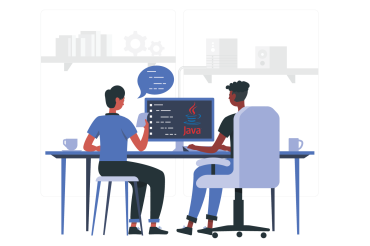Description
🔥 What Can JavaScript Do?
- Show or hide elements on a page (like a dropdown menu)
- Respond to user actions (click, scroll, input)
- Create pop-up messages, alerts, and modals
- Validate form inputs before submitting
- Create animations, sliders, and interactive maps
- Build full web apps with frameworks (React, Vue, Angular)
- Connect to servers and APIs to get data (like weather, news, etc.)
📦 JavaScript Works With:
- HTML – to select and change elements
- CSS – to change styles dynamically
- APIs – to get and send data (like chat apps, weather apps)
- Frameworks – like React, Angular, and Vue for modern web apps
🌍 Where Is JS Used?
- Websites
- Mobile apps (with React Native)
- Game development
- Server-side apps (Node.js)
- Browser extensions
💡 Why Learn JavaScript?
- It’s one of the most popular languages in the world
- It runs in every web browser
- It’s the key to modern web development
Course content
Introduction to JavaScript
An overview of JavaScript as a programming language used for creating dynamic and interactive web content. Covers its purpose, history, and where it runs in the browser.
JavaScript Syntax and Output
Focuses on the structure and rules of writing JavaScript code, including how to produce output using methods like logging to the console or displaying content on the page.
Variables and Constants
Explains how to store data using var, let, and const, and discusses the differences in scope, mutability, and usage.
Data Types and Type Conversion
Covers primitive and non-primitive data types, and how to convert between them explicitly or implicitly during operations.
Operators in JavaScript
Introduces different operators such as arithmetic, assignment, comparison, logical, and others used to perform operations on values.
Control Structures (Conditions & Branching)
Teaches how to use conditional logic with if, else, else if, switch, and ternary operators to control program flow.
Week 1 Review + Practical Exercises
A review of all Week 1 topics with hands-on exercises to reinforce syntax, variables, data types, and control structures.
Working with Objects and JSON
Explains object creation, properties, methods, and the basics of JSON (JavaScript Object Notation) for data structure and exchange.
Loops and Iteration
Introduces loop structures (for, while, do...while, and for...of) used to repeat code for processing arrays and other data.
JavaScript Functions
Teaches how to define and invoke reusable blocks of code called functions, including parameter handling and return values.
Arrow Functions and Callbacks
Introduces modern syntax for concise function writing (arrow functions) and explains how functions can be passed as arguments (callbacks).
Mini Project: Calculator
Applies functions, operators, and input/output logic to build a simple functional calculator.
Sync vs Async Programming
Explains the difference between synchronous (blocking) and asynchronous (non-blocking) code execution and their impact on user experience.
Callback Functions
Deep dive into asynchronous callbacks used to handle events or delayed operations like data fetching.
JavaScript Promises
Introduces Promises as a modern way to handle asynchronous operations, avoiding callback nesting.
Using async/await
Covers async and await syntax for writing cleaner asynchronous code and handling Promise results more readably.
Working with the fetch API
Explains how to use the Fetch API to make HTTP requests to servers and work with responses and JSON data.
Reading Form Data
Teaches how to access user input from form elements using JavaScript.
Validating Input Data
Covers techniques for checking form input for correctness, such as ensuring required fields or proper formats.
Managing Form Events
Focuses on handling events like submit, change, and input to control how form data is processed.
Mini Project: User Login Form
Uses forms, events, and validation logic to simulate a user login form with feedback and checks.
Saving Form Data
Explains how to store form submissions in browser storage like localStorage or sessionStorage.
Using sessionStorage and Cookies
Details the use of sessionStorage for temporary data, and cookies for lightweight, persistent client-side data.
CRUD Concepts in JavaScript
Introduces the four basic data operations: Create, Read, Update, Delete, and how they apply in JavaScript applications.
Filtering, Sorting, and Searching Data
Covers array methods and logic to manipulate and query data sets efficiently.


